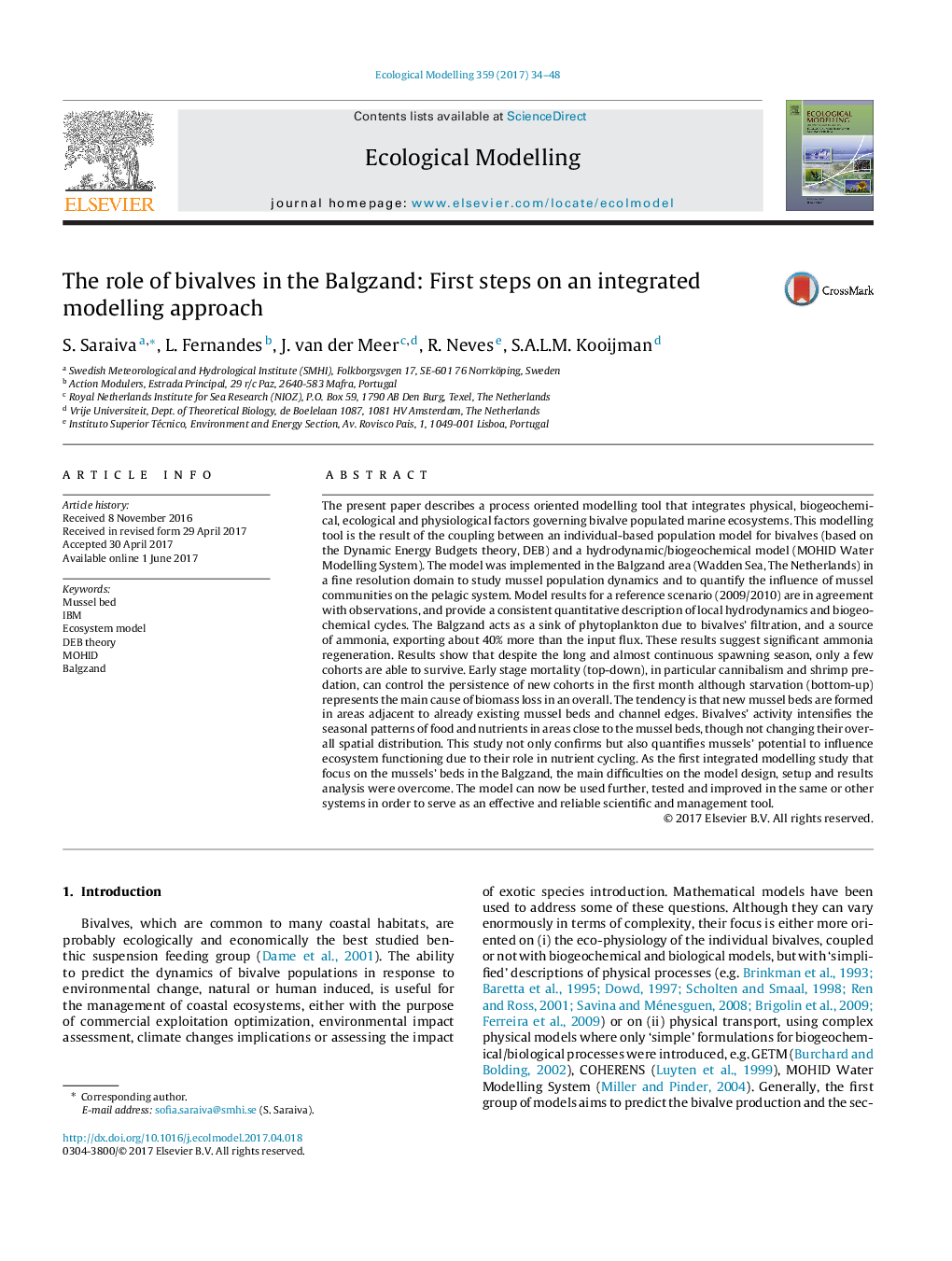| Article ID | Journal | Published Year | Pages | File Type |
|---|---|---|---|---|
| 5742119 | Ecological Modelling | 2017 | 15 Pages |
â¢An IBM (DEB) model for bivalves was coupled to an ecosystem model (MOHID).â¢The model was implemented in the Balgzand intertidal area in a fine resolution domain.â¢The Balgzand acts a sink of phytoplankton and a source of ammonia.â¢Spawning season is long but new cohorts are controlled by cannibalism and shrimps.â¢Starvation is the main mortality in biomass and cannibalism the main in numbers.
The present paper describes a process oriented modelling tool that integrates physical, biogeochemical, ecological and physiological factors governing bivalve populated marine ecosystems. This modelling tool is the result of the coupling between an individual-based population model for bivalves (based on the Dynamic Energy Budgets theory, DEB) and a hydrodynamic/biogeochemical model (MOHID Water Modelling System). The model was implemented in the Balgzand area (Wadden Sea, The Netherlands) in a fine resolution domain to study mussel population dynamics and to quantify the influence of mussel communities on the pelagic system. Model results for a reference scenario (2009/2010) are in agreement with observations, and provide a consistent quantitative description of local hydrodynamics and biogeochemical cycles. The Balgzand acts as a sink of phytoplankton due to bivalves' filtration, and a source of ammonia, exporting about 40% more than the input flux. These results suggest significant ammonia regeneration. Results show that despite the long and almost continuous spawning season, only a few cohorts are able to survive. Early stage mortality (top-down), in particular cannibalism and shrimp predation, can control the persistence of new cohorts in the first month although starvation (bottom-up) represents the main cause of biomass loss in an overall. The tendency is that new mussel beds are formed in areas adjacent to already existing mussel beds and channel edges. Bivalves' activity intensifies the seasonal patterns of food and nutrients in areas close to the mussel beds, though not changing their overall spatial distribution. This study not only confirms but also quantifies mussels' potential to influence ecosystem functioning due to their role in nutrient cycling. As the first integrated modelling study that focus on the mussels' beds in the Balgzand, the main difficulties on the model design, setup and results analysis were overcome. The model can now be used further, tested and improved in the same or other systems in order to serve as an effective and reliable scientific and management tool.
